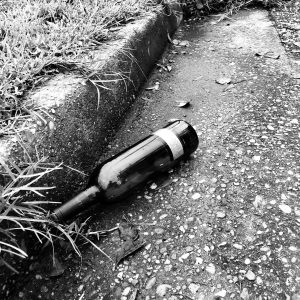Want to experience the greatest in board studying? Check out our interactive question bank podcast- the FIRST of its kind here: emrapidbombs.supercast.com
Author: Blake Briggs, MD
Peer Reviewers: Travis Smith, DO, Sean O’Sullivan, MD
Introduction
Beta-blockers (BB) have a long history of treating a variety of diseases. Millions of Americans are on these medications, and although they are very well-tolerated, toxicity is associated with substantial morbidity and mortality. The vast majority of cases are unintentional (~80%), and 10% of total cases were deemed as moderate-major outcomes. Propranolol was the most common BB overdose.
Necessary pathophysiology
Beta receptors are sympathomimetic receptors found throughout the body. BB can be selective (Beta-1, like metoprolol) for some of these or are nonspecific, like carvedilol or propranolol. However, remember at toxic doses selectivity is lost & BB antagonize all 3 types.
Beta-1: heart muscle. Receptor activation = increased inotropy, chronotropy, and AV conduction.
Beta-2: bronchial smooth muscle and peripheral smooth vascular muscle. Receptor activation = bronchodilation and vasodilation.
Beta-3: adipose tissue and heart. Receptor activation = lipolysis.
Accelerate your learning with our EM Question Bank Podcast
- Rapid learning
- Interactive questions and answers
- new episodes every week
- Become a valuable supporter
All BB antagonize the beta receptor on the cell surface, decreasing cAMP.
Some BB possess high lipid solubility (e.g. propranolol). This allows them to rapidly cross the blood-brain barrier. It also means they are more amenable to lipid emulsion therapy.
““Pro-tip: Beta blockers that begin with the letter A M are Beta-1 selective. Exceptions to this include carvedilol, labetalol, and nadolol.””
In general, each BB agent slightly differs in their membrane stabilizing activity, lipophilicity, and selectivity.
The presence of membrane stabilizing activity has the greatest influence on adverse cardiovascular effects.
The most severe overdoses are seen in propranolol, acebutolol, betaxolol, and sotalol (all have significant membrane stabilizing activity).
Average half-life of immediate release BB is 2-8 hours. In extended release medications symptoms can be delayed up to 24 hours.
Clinical presentation
As with any ingestion, it is critical to find out the following (relying heavily on family members, friends, and EMS):
-specific agent, amount ingested, time of ingestion, any co-ingestions like calcium channel blockers (CCBs are profoundly bad).
Law enforcement might have to be utilized to go to the patient’s place of residence to acquire the medication bottles if the patient is incapacitated or not being forthright. Calling the patient’s pharmacy or any helpful EMR retrieving tricks can pay dividends.
Presentation
Bradycardia and hypotension are most common initially —> progression to myocardial depression and cardiogenic shock.
Altered mental status (delirium, coma, seizures) can happen any time but are more commonly with hypotension (more common in propranolol due to lipophilicity).
Respiratory depression with bronchospasm.
Hypoglycemia
Lab studies
Since serum BB concentrations will not be available in the ED, there are other important labs to help rule out other toxicologic etiologies.
- EKG, fingerstick glucose, CBC, CMP, ABG, urine drug screen, acetaminophen, and salicylate levels.
- Lactate levels are an insensitive finding with beta blocker overdose.
- Hypoglycemia and hyperkalemia are classic findings but not reliable.
EKG findings include prolonged PR interval and bradycardia. QRS prolongation can occur in severe cases or BB with membrane stabilizing activity.
Differential
CCB overdose are less likely to alter mental status early on. Hyperglycemia is classic.
Digoxin: more nausea and vomiting. Different and bizarre EKG findings (ST depressions, atrial tachycardia, AV block, PVCs).
Clonidine: resembles opioid overdose.
Differential
CCB overdose are less likely to alter mental status early on. Hyperglycemia is classic.
Digoxin: more nausea and vomiting. Different and bizarre EKG findings (ST depressions, atrial tachycardia, AV block, PVCs).
Clonidine: resembles opioid overdose.
Initial stabilization
There is no clear antidote for BB overdose. Treatment depends on the severity of the clinical presentation.
The Airway should be secured early on. Any signs of substantial change in mental status should be a low threshold to intubate, especially given the foreseeable level of critical care that will need to be delivered. Atropine can be given for bradycardia during RSI.
Activated charcoal is forgotten about in most cases, but here you should consider its use as BB overdoses are quite awful and any chance to reduce the ingested material should be strongly considered.
-1g/kg by mouth, only seriously consider within 1-2 hours of suspected or known overdose.
-IV dextrose for hypoglycemia (D50W boluses for adults)
-Benzodiazepines for seizures
-Bradycardia and hypotension should be treated with atropine and IV fluids, respectively (see severe symptoms for step up therapy)
-IV Na-bicarbonate for commonly seen QRS prolongation (Propranolol has been shown to cause Brugada-like pattern).
Severe symptomatic patients, the above interventions are still applicable, along with the interventions below:
IV glucagon bolus: (5 mg slow push), followed by a 2nd dose in 10 minutes. If no response within 5 minutes of each, do not give an infusion. If there is a change in pulse or BP, start an infusion at 2-5 mg/hr.
IV calcium salts: (Ca-chloride (1g of 10% solution; 10 mL), may repeat until max 3g. Or Ca-gluconate (30 mL of 10% solution, max 3g).
IV epinephrine: infuse at 1 mcg/minute and titrate to MAP goal >60.
High dose IV insulin and glucose: 1U/kg regular short acting insulin bolus, infuse 0.5U/kg/hr with max dose 10U/kg/hr. Increase by 50% every 20 minutes until a goal is met.
IV lipid emulsion: Fats used in TPN can often bind the lipophilic nature of BB. Data on this is evolving. Consult your toxicologist or poison control at (800) 222-1222.
Mildly symptomatic patients with bradycardia and hypotension should be treated with atropine and IV fluids, respectively.
Most patients do not respond to these therapies alone, so further treatments as noted above are added in succession (i.e. Glucagon first, followed by calcium salts, etc). -We recommend a 15-30 minute period of surveillance for each therapy to determine the effectiveness
More on specific therapies:
Glucagon: activates cAMP à increases intracellular calcium available for contractility. Also helps decrease hypoglycemia.
Vomiting is a common side effect. Concomitant ondansetron is helpful. Limited case reports & animal models are available regarding Glucagon effectiveness. Email for details ([email protected]).
Calcium salts: Either calcium chloride or calcium gluconate. We prefer calcium gluconate in patients with a pulse due to high risk of extravasation and tissue necrosis from calcium chloride. From case reports and animal models, they work by improving inotropy.
Epinephrine: added after the above options fail. It can be used as a temporizing method until high dose insulin is used. We suggest early placement of an arterial line in these critically ill patients for close BP monitoring.
· Epinephrine works by catecholaminergic activation of beta receptors.
· In reality, however, catecholaminergic agents have limited effectiveness which is likely due to the fact that high doses are required to overcome the BB toxicity, placing the patient at risk for deadly arrhythmias.
Insulin & Glucose: this is not your grandma’s insulin. This can be 10x the dose of DKA insulin, so hypoglycemia is a real concern. Response to insulin is delayed up to 60 minutes, therefore other strategies as noted above are helpful in conjunction.
If glucose is <150 mg/dL or potassium is <3 mEq/L, these should be addressed before starting insulin.
Incomplete understanding of mechanism, insulin may improve inotropy by providing substrate with myocytes.
Lipid emulsion therapy: Consult your toxicologist (Call (800) 222-1222) for dosing strategies.
Therapies with limited utility: IV pacing (rarely used, rarely effective); hemodialysis (beta blockers are majority hydrophilic and minimally protein-bound). Consultation with toxicologist and nephrologist is absolutely needed to discuss possible dialysis.
Treatment monitoring
Glucose and potassium should be measured every hour. If calcium is used, its levels should be measured every 4-6 hours.
Disposition: ICU for those symptomatic, they will have a rough course.
Asymptomatic patients? 24 hours observation for a child or adult who ingests extended-release preparations, sotalol, or multiple cardioactive agents. If not, 6 hours is reasonable.
References
1. Menke NB, Walsh SJ, King AM. Cardiotoxicodynamics: Toxicity of Cardiovascular Xenobiotics. Emerg. Med. Clin. North Am. 2015 Aug;33(3):563-95.
2. Love JN, Howell JM, Litovitz TL, Klein-Schwartz W. Acute beta blocker overdose: factors associated with the development of cardiovascular morbidity. J Toxicol Clin Toxicol 2000; 38:275.
3. Vucinić S, Joksović D, Jovanović D, et al. Factors influencing the degree and outcome of acute beta-blockers poisoning. Vojnosanit Pregl 2000; 57:619.
4. Taboulet P, Cariou A, Berdeaux A, Bismuth C. Pathophysiology and management of self-poisoning with beta-blockers. J Toxicol Clin Toxicol 1993; 31:531.
5. Samuels TL, Uncles DR, Willers JW, et al. Logging the potential for intravenous lipid emulsion in propranolol and other lipophilic drug overdoses. Anaesthesia 2011; 66:221.
6. Love JN. Acebutolol overdose resulting in fatalities. J Emerg Med 2000; 18:341.
7. Neuvonen PJ, Elonen E, Vuorenmaa T, Laakso M. Prolonged Q-T interval and severe tachyarrhythmias, common features of sotalol intoxication. Eur J Clin Pharmacol 1981; 20:85.
8. Love JN, Litovitz TL, Howell JM, Clancy C. Characterization of fatal beta blocker ingestion: a review of the American Association of Poison Control Centers data from 1985 to 1995. J Toxicol Clin Toxicol 1997; 35:353.
9. Lifshitz M, Zucker N, Zalzstein E. Acute dilated cardiomyopathy and central nervous system toxicity following propranolol intoxication. Pediatr Emerg Care 1999; 15:262.
10. Soni N, Baines D, Pearson IY. Cardiovascular collapse and propranolol overdose. Med J Aust 1983; 2:629.
11. Hofer CA, Smith JK, Tenholder MF. Verapamil intoxication: a literature review of overdoses and discussion of therapeutic options. Am J Med 1993; 95:431.
12. Ashraf M, Chaudhary K, Nelson J, Thompson W. Massive overdose of sustained-release verapamil: a case report and review of literature. Am J Med Sci 1995; 310:258.
13. Bailey B. Glucagon in beta-blocker and calcium channel blocker overdoses: a systematic review. J Toxicol Clin Toxicol 2003; 41:595.
14. Boyd R, Ghosh A. Towards evidence based emergency medicine: best BETs from the Manchester Royal Infirmary. Glucagon for the treatment of symptomatic beta blocker overdose. Emerg Med J 2003; 20:266.
15. Love JN, Hanfling D, Howell JM. Hemodynamic effects of calcium chloride in a canine model of acute propranolol intoxication. Ann Emerg Med 1996; 28:1.
16. Sakurai H, Kei M, Matsubara K, et al. Cardiogenic shock triggered by verapamil and atenolol: a case report of therapeutic experience with intravenous calcium. Jpn Circ J 2000; 64:893.
17. Holger JS, Engebretsen KM, Fritzlar SJ, et al. Insulin versus vasopressin and epinephrine to treat beta-blocker toxicity. Clin Toxicol (Phila) 2007; 45:396.
18. Pertoldi F, D’Orlando L, Mercante WP. Electromechanical dissociation 48 hours after atenolol overdose: usefulness of calcium chloride. Ann Emerg Med 1998; 31:777.
19. Avery GJ 2nd, Spotnitz HM, Rose EA, et al. Pharmacologic antagonism of beta-adrenergic blockade in dogs. I. Hemodynamic effects of isoproterenol, dopamine, and epinephrine in acute propranolol administration. J Thorac Cardiovasc Surg 1979; 77:267.
20. Krenz JR, Kaakeh Y. An Overview of Hyperinsulinemic-Euglycemic Therapy in Calcium Channel Blocker and β-blocker Overdose. Pharmacotherapy 2018; 38:1130.
21. Cole JB, Arens AM, Laes JR, et al. High dose insulin for beta-blocker and calcium channel-blocker poisoning. Am J Emerg Med 2018; 36:1817.
22. Shanker UR, Webb J, Kotze A. Sodium bicarbonate to treat massive beta blocker overdose. Emerg Med J 2003; 20:393.



